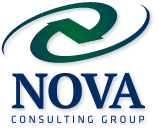Evaluating RFPs
So the sales team has just received a Request for Proposal (RFP), and it is from a prospect that is “on your target list.”
What an excellent opportunity to connect and finally add them to your client list – Exciting, Incremental Revenue, Achievement, and…(and emotionally so on).
All you need to do is to win the opportunity associated with the RFP on your desk. So get to it!
Not necessarily……..
At this point, rather than “getting to it,” you first need to exercise some “situational awareness” (a term used by military aviators which describes the ability to identify, process, and comprehend the critical elements of information about what is happening to you (and your team) with regards to the mission. More simply, it is knowing what is going on around you).
Responding to an RFP is resource intensive. Even if you are on the “short list” or, as the prospective client tells you – “you are one of a selected few,” you need to proceed cautiously. Before assembling the response team and resources, ask yourself the following:
Was it unsolicited?
An unsolicited RFP should be initially viewed as a “red flag.” Proceed with caution until you get additional information. We no longer operate in a world where the seller is the keeper of the information. The internet has enabled buyers with the power to access information previously held only by sellers. Know that the buyer on the other end of the RFP on your desk has, most likely, done their research and may know more about your company than you know about theirs. Your response to the RFP may be only “column fodder” to fill an internal requirement with the prospective client to gather “at least X number of proposals.” Even if you know about the RFP, proceed cautiously – what you don’t know will derail you.
Who wrote the RFP?
Don’t assume that the prospective client created the original content of the RFP. They may have “ghost writers,” and these backroom authors may be your competition. If they are, then, most likely, your competition is occupying Column A, and everyone else is “column fodder.”
Who are the power buyers and influencers?
If you don’t know the power buyers and influencers, you will not win the RFP competition. Assuming you are not column fodder and, even if your product or service precisely aligns with the RFP requirements, your chances of success will be limited without (1) knowing all of the stakeholders involved and (2) understanding their personal and professional “wins.” Remember that titles are not accurate guides to “power” in the competitive RFP process. The person lowest on the org chart may have the most influence.
How aligned is my product or service to the prospective client’s requirements?
To answer this, you must first determine what is “needed” versus “wanted.” Within the “needs” list, there is a priority. Determine what capabilities are at the top of the list. If your product or service meets these needs, you can move down the list until you have aligned with all of the “needs” requirements. Oh, and another thing – each stakeholder will have a different “needs” list. You must be able to address them all – the needs of the enterprise and the needs of the individual stakeholders.
These are only a few initial questions you should consider before committing the resources to an RFP response; there are many more questions to consider. In addition, as part of your response process, you should construct a list of qualifying questions to map against any RFP under consideration.
Responding to an RFP should be included in your overall strategy. You should have a process to support the sustainable response effort, and execution should be well planned from the response team members to a pool of RFP content to review and submit to the prospective client and follow up.
For more information about improving your sales effectiveness, check out our Insights page and these articles:


